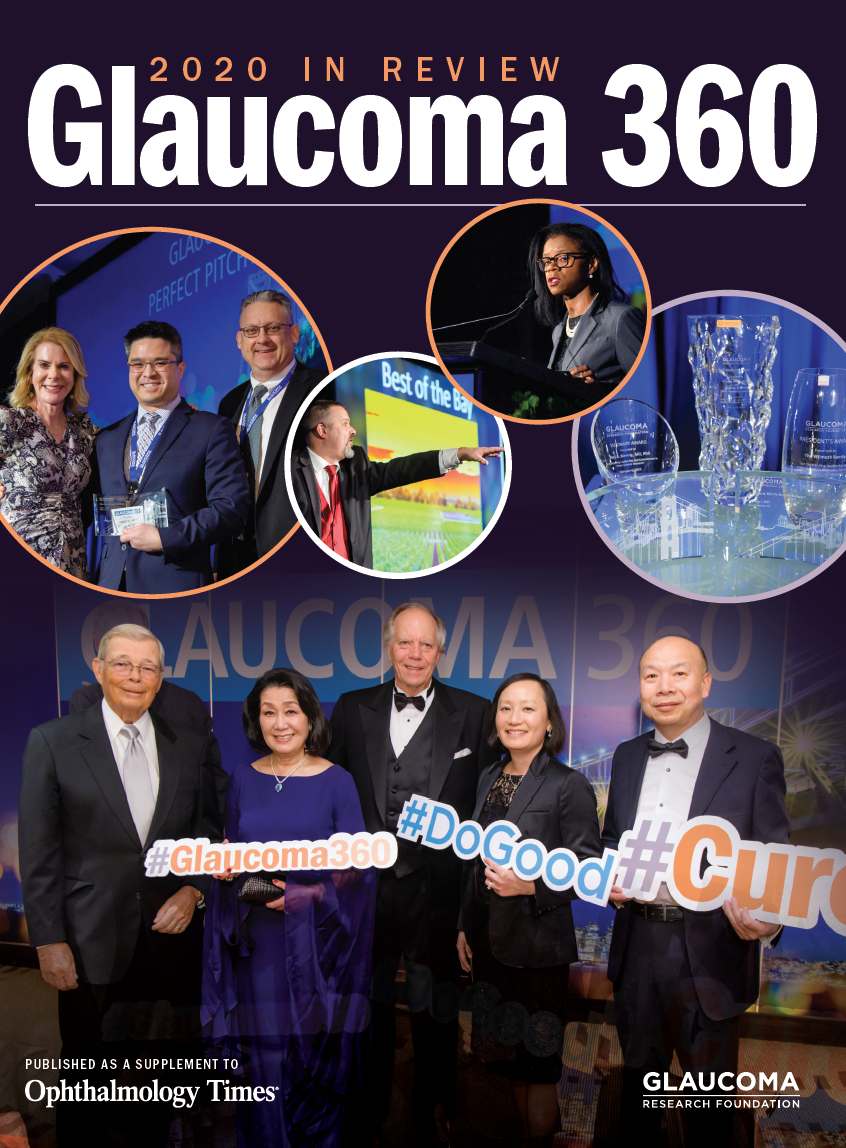Publication
Article
Supplements and Featured Publications
Funding new technologies for glaucoma treatment
Author(s):
With an eye on innovation, money is driving research of new therapies and devices.

Fostering innovation of new technologies for glaucoma is one focus of the Glaucoma Research Foundation, which in the past has highlighted over 95 new technologies, said Adrienne Graves, PhD, at the opening of the New Horizons Forum.
However, obtaining funding to foster those innovations is no easy task. The “friendly-fire” “Shark Tank” session, titled “Show me the Money––Getting to Go in Early Stage Glaucoma Financing,” gave innovators from Glint Pharmaceuticals, Qlaris Bio, Inc, and Smartlens, Inc, the opportunity to do just that and help one of the 3 presenters get their new product into the pipeline.
Contact lens drug delivery device
Glint Pharmaceuticals is developing a new contact lens drug delivery device, according to CEOChris Adams, that will deliver drugs to the eye to treat a variety of ocular diseases. The company’s approach increases the bioavailability of drugs over conventional eye drops by a factor of 50 times. This innovative contact lens, with extended drug release, showed good results in glaucoma, with prolonged intraocular pressure (IOP) reductions in a phase 1 clinical trial that included 10 patients at the University of Florida and identified no adverse effects.
“An approved contact lens is combined with both a patented drug-eluting process and approved drugs to treat a variety of diseases for very large markets,” said Adams.
This device is effective for treating glaucoma because it was engineered with vitamin E nano-barriers to extend drug release, which are diffusion barriers that the vitamin E complex must work through to leave the lens. The barriers prevent the drug from leaving the lens quickly by forcing the drug to follow a prescribed pattern through the lens and circumvent the barriers. The complexes can be adjusted to achieve slow and fast release. For glaucoma, Adams envisions once-weekly dosing for 2 hours.
“If the drugs were simply instilled in a contact lens, the drug would just run out of the lens into the eye in a few minutes,” Adams said.
Initial plans for the lens, in addition to treating glaucoma, include supplying an antibiotic to treat corneal ulcers and abrasions, ocular cystinosis, postoperative pain, and dry eye. The company expects to launch the first product in 2020.
Therapy targeting episcleral venous pressure
Thurein Htoo, MS, MBA, CEO and co-founder of Qlaris Bio, discussed whether value exists in further incremental drugs that target the lowering of IOP.
As he pointed out, the IOP market is a highly competitive space in addition to being old
. “The reason for this is that many multiple mechanisms of action currently exist in the marketplace that include the gold-standard mainstay drugs such as the prostaglandins, beta-blockers, and others that when used alone or in combination are quite effective, well tolerated, and very cheap because many of the drugs are generics,” he commented.
In addition, the minimally invasive glaucoma surgery devices soon will be commanding a larger share of the market.
To meet the challenge of this competitive marketplace, Htoo put forward the hypothesis that perhaps the current IOP-lowering medications and devices are not targeting every component of IOP.
“The open component that tends to be ignored and left unaddressed over and above the aqueous humor inflow rate, uveoscleral outflow rate, and conventional trabecular outflow is episcleral venous pressure [EVP],” he pointed out.
“No specific therapies significantly or substantively lower EVP or target outflow of vessels distal to Schlemm’s canal. The EVP can be a large contributor to the IOP that remains wholly unaddressed,” he said, adding that targeting EVP opens up a unique treatment area of opportunities beyond the typical IOP treatments.
Qlaris Bio is developing QLS-101, a small molecule, ATP-sensitive potassium channel modulator that can address, at one end of the spectrum, pathologic EVP in, for example, Sturge-Weber syndrome. This condition is characterized by elevated EVP and responds only modestly to the current therapies. At the other end of the spectrum, QLS-101 can address normal-tension glaucoma via a vasodilatory mechanism on the vessels distal to the trabecular meshwork. The dosing is one drop per eye daily.
“We have evidence that this works across multiple animal species and in human eye explants and evidence that the drug changes only EVP and not the other components of IOP,” Htoo said.
Soft contact lens to monitor IOP
Savas Komban, CEO and cofounder of Smartlens, reported on Smartlens’ ultra-sensitive, electronics-free, soft contact lens, which can monitor IOP frequently and noninvasively.
Currently, physicians rely on monitoring IOP every 3 months to treat and diagnose glaucoma. “We do not have a reliable solution to address the significant clinical need for more frequent IOP measurements. The existing devices fall far short of meeting the requirements for an ideal solution,” Komban commented. These consist of a hand-held device for home use, an electronic contact lens that requires hospitalization, or an implantable device that requires surgery, which he described as expensive, difficult to use, and less than accurate.
The Smartlens system includes a soft contact lens and a smartphone to monitor the diurnal IOP anywhere and conveniently, via a selfie taken while wearing the contact lens. The software analyzes the image and provides a readout that can be sent to a medical provider.
The system, said Komban, is easy to use, power-free, noninvasive, affordable, and has a sufficiently accurate sensor to provide precise measurements. Preclinical testing of the device’s response to IOP on enucleated porcine eyes compared favorably with the Tono-Pen. “The device measurements showed a one-to-one correspondence to the input IOP and measured the IOP with 1 mm Hg accuracy,” Komban noted.
Clinical trials are expected to begin at 3 sites and include 30 to 50 subjects. The product is expected to be clinically available in early 2022.
The next step with the technology is to incorporate a drug into the IOL that will be delivered when the Smartlens senses IOP increases.
And the winner of the “Perfect Pitch” is ...
Thurein Htoo for EVP treatment!

Newsletter
Don’t miss out—get Ophthalmology Times updates on the latest clinical advancements and expert interviews, straight to your inbox.




